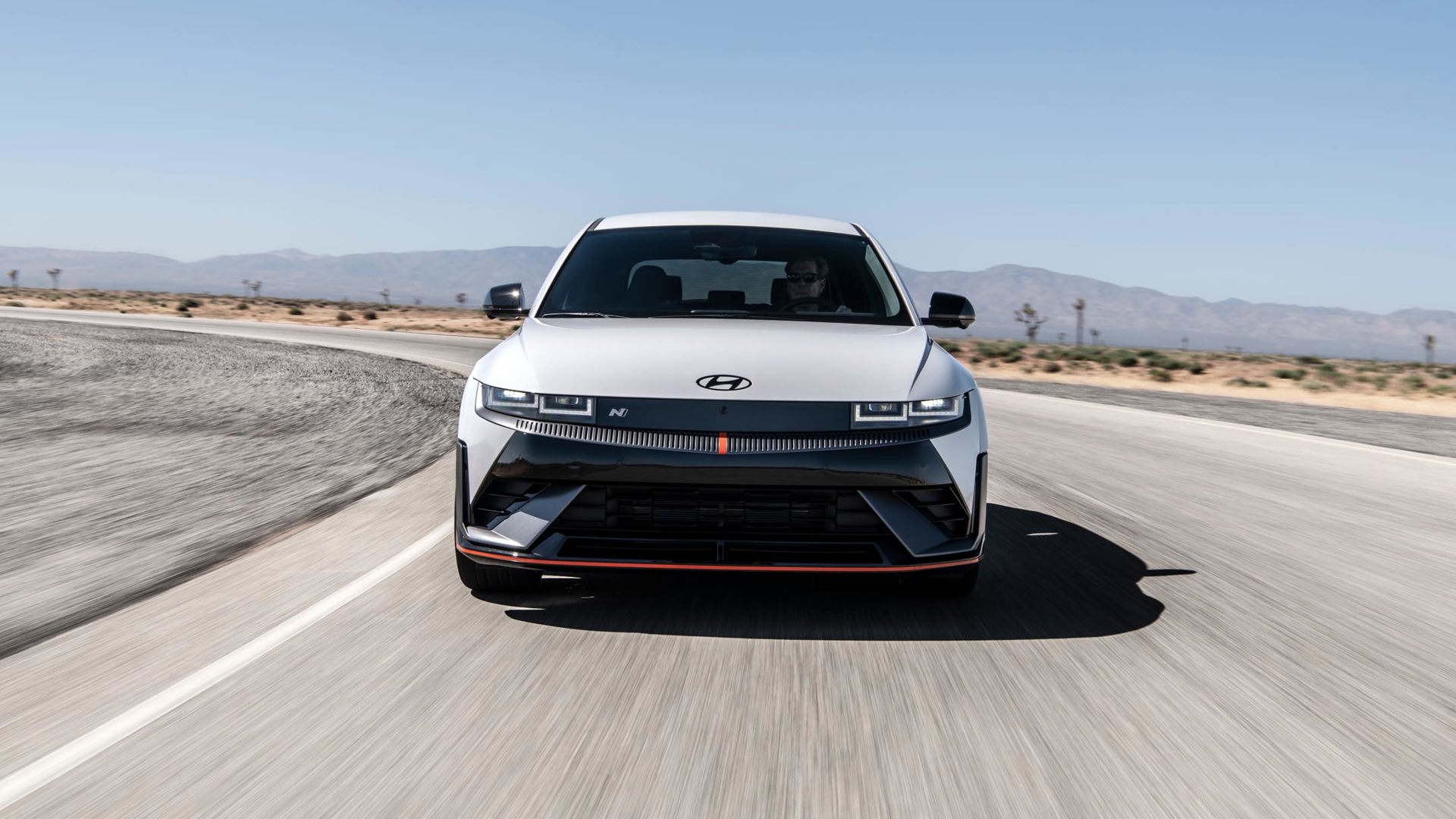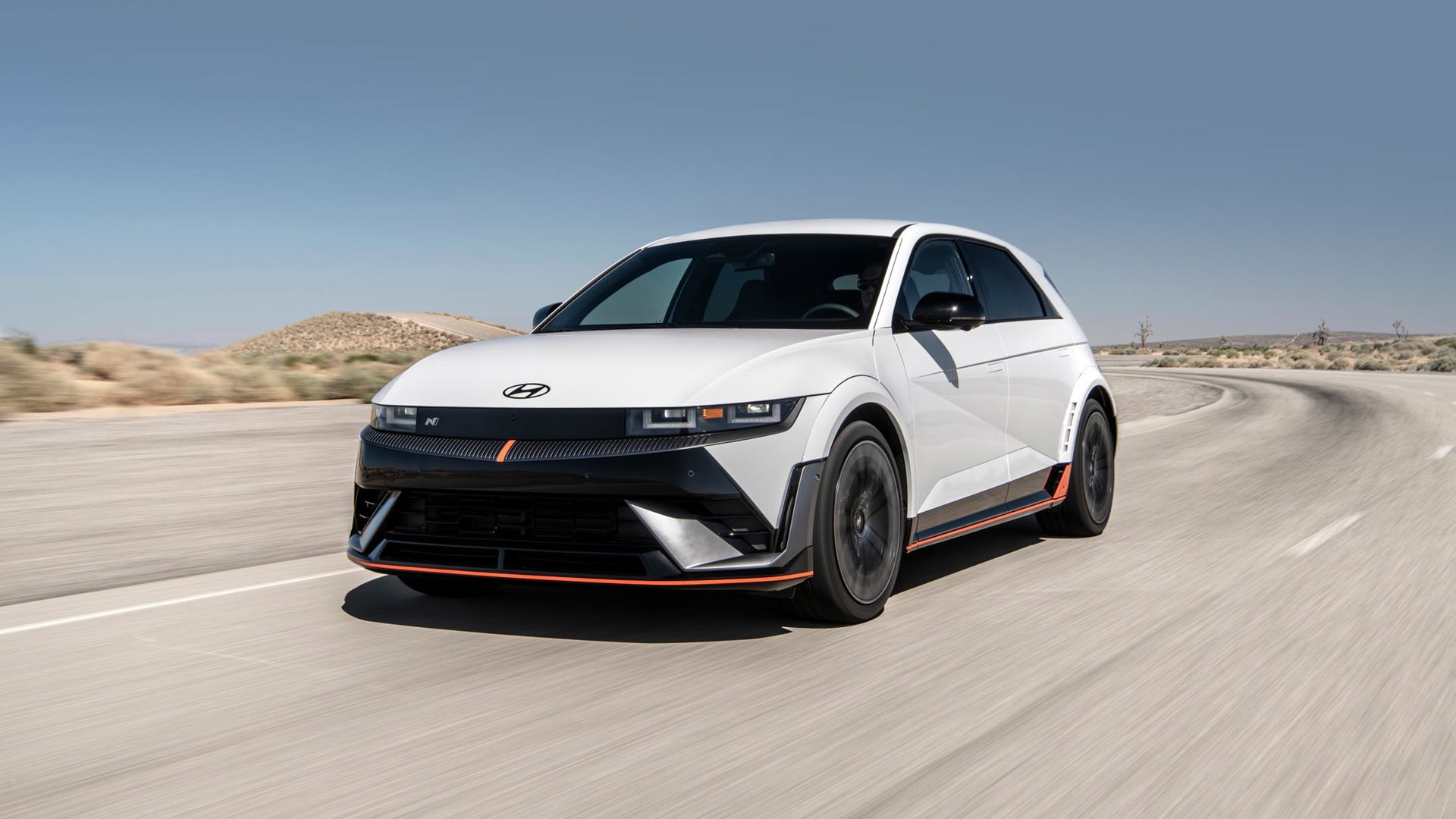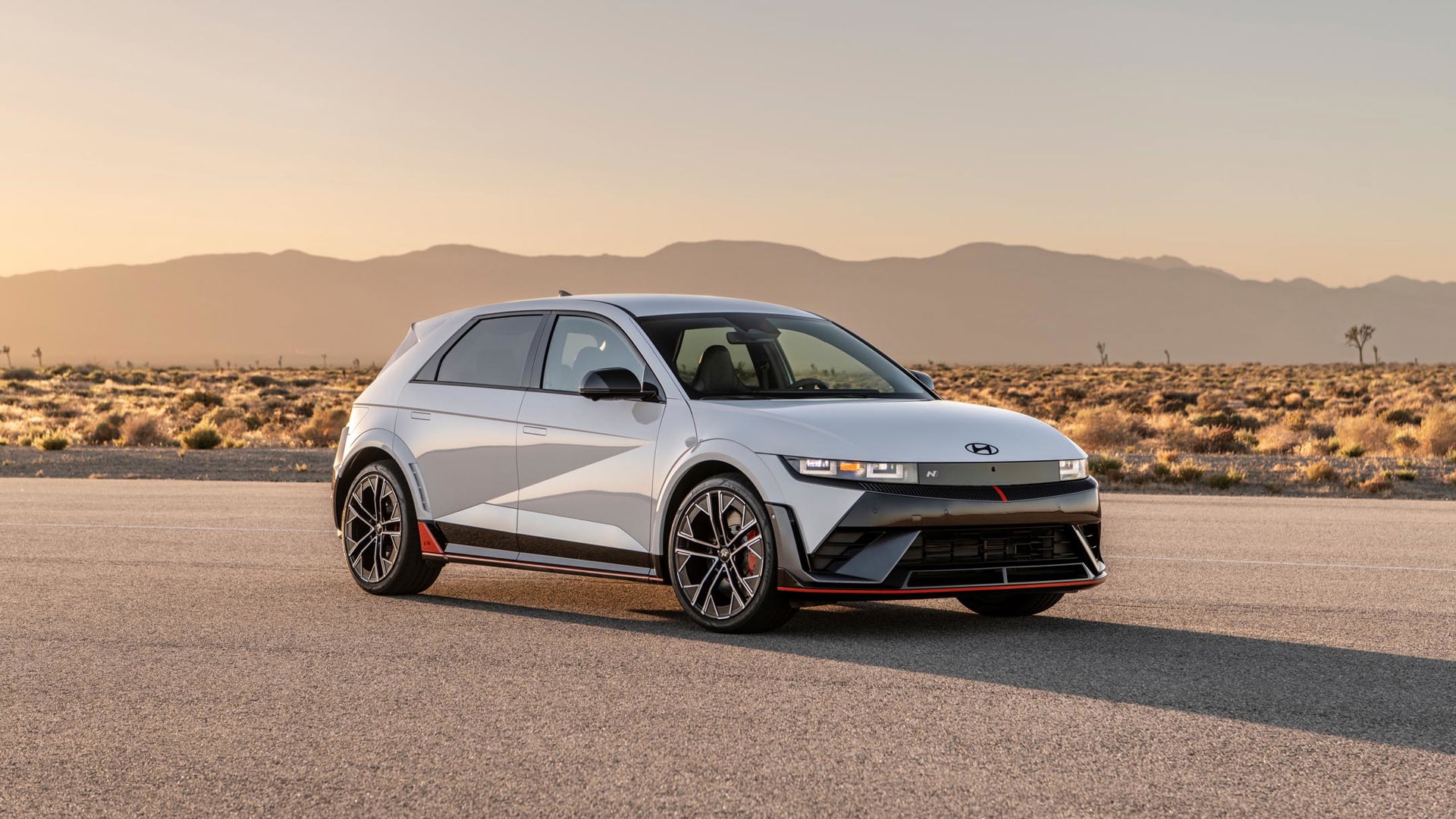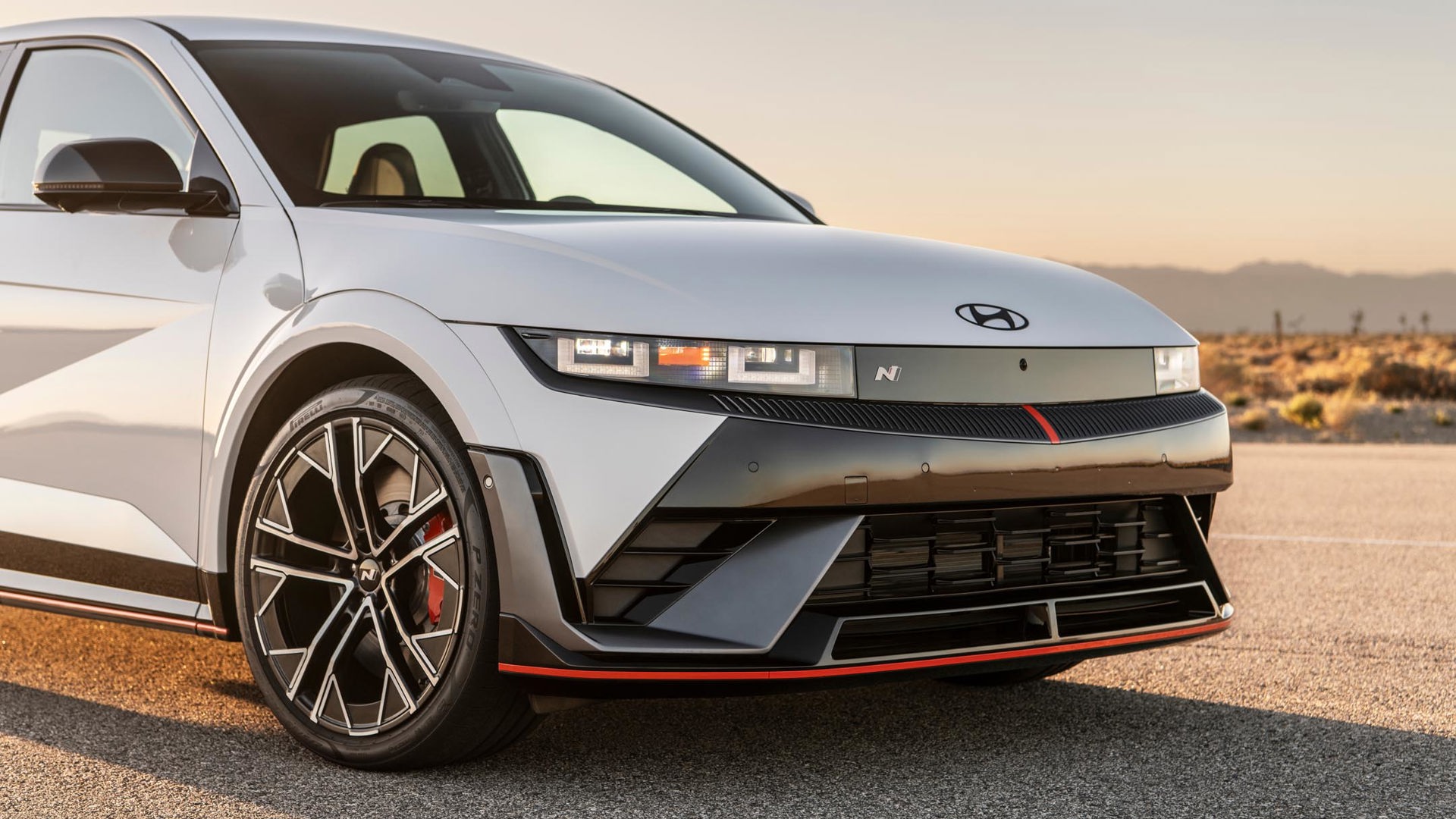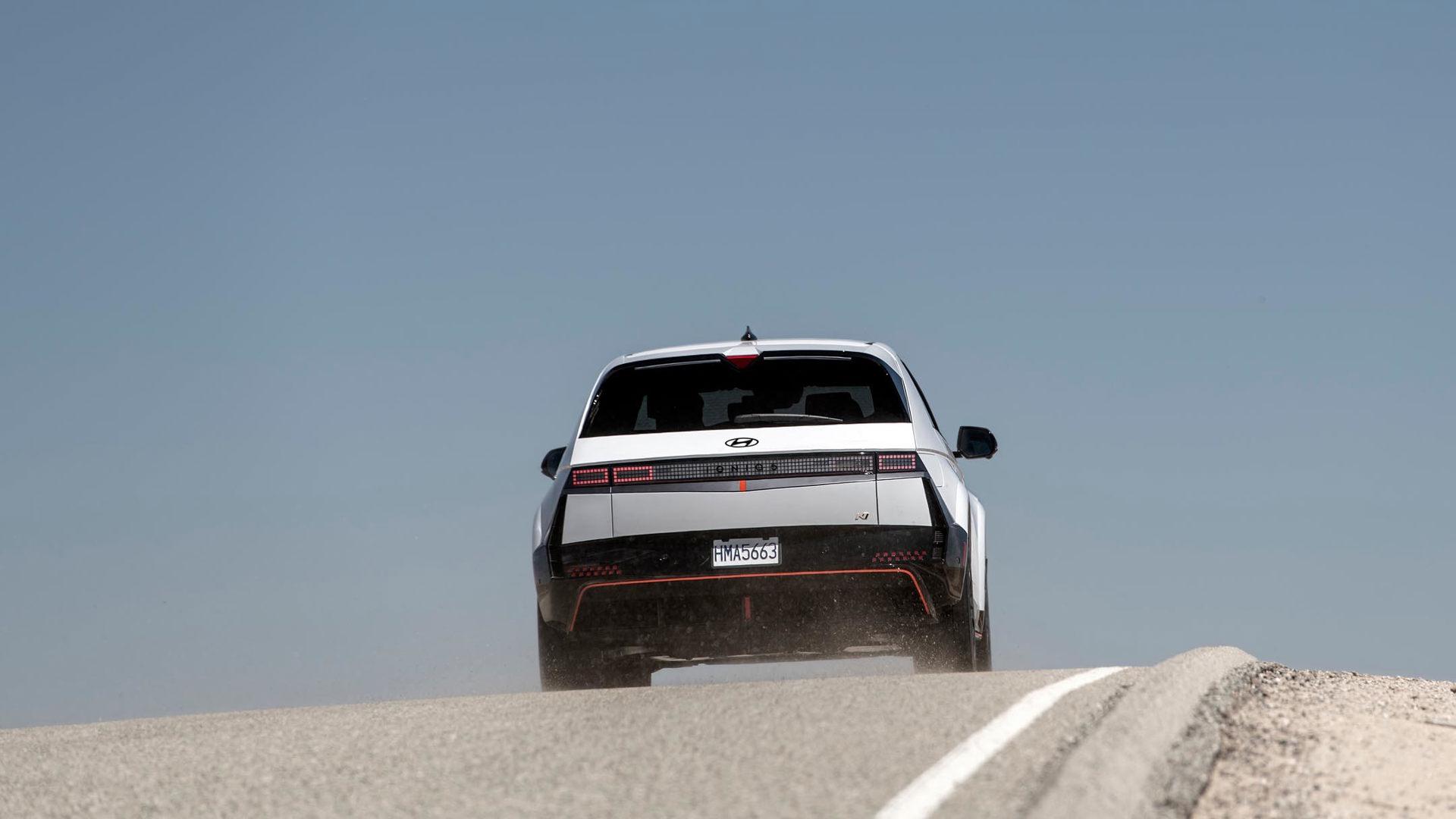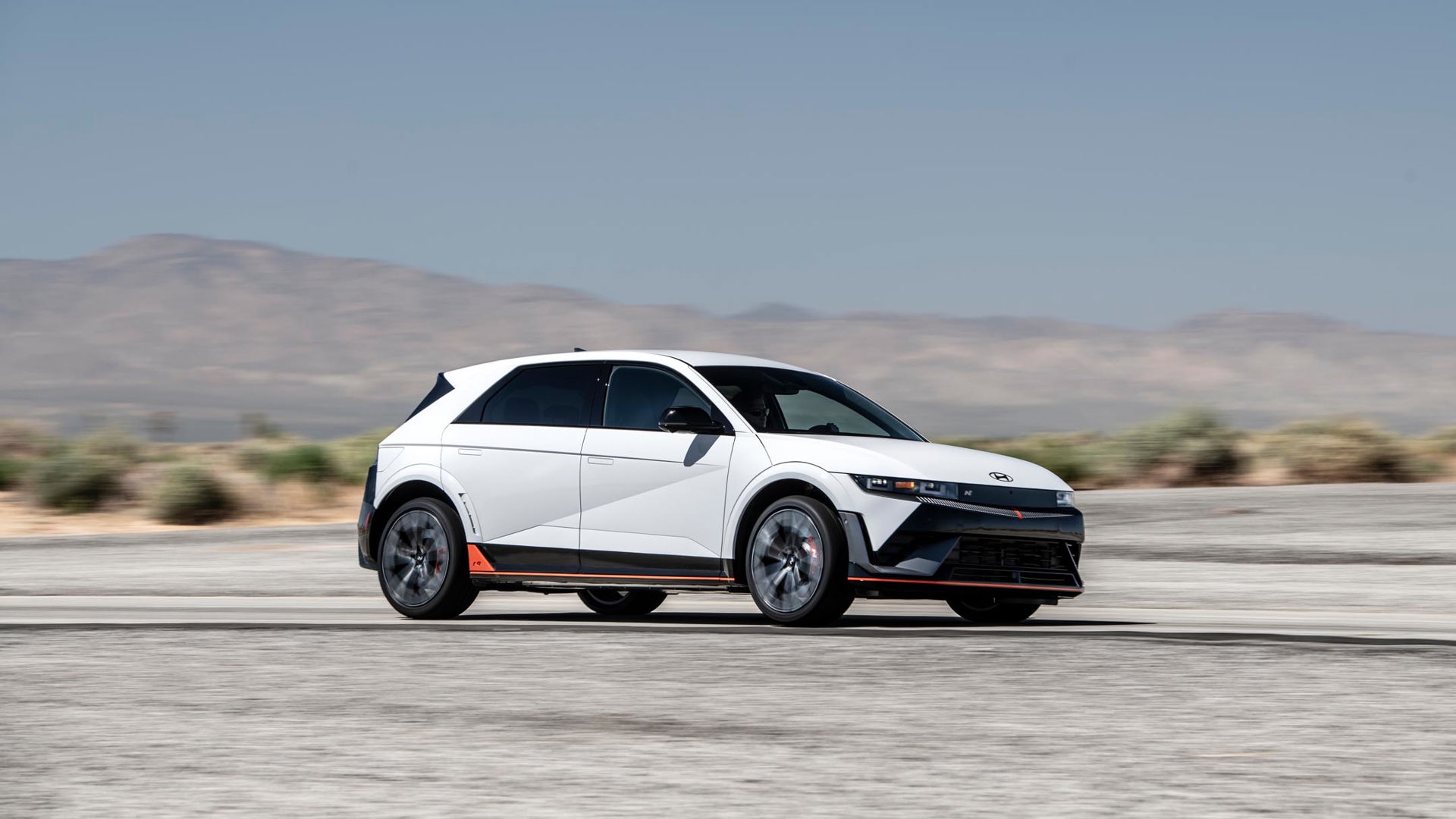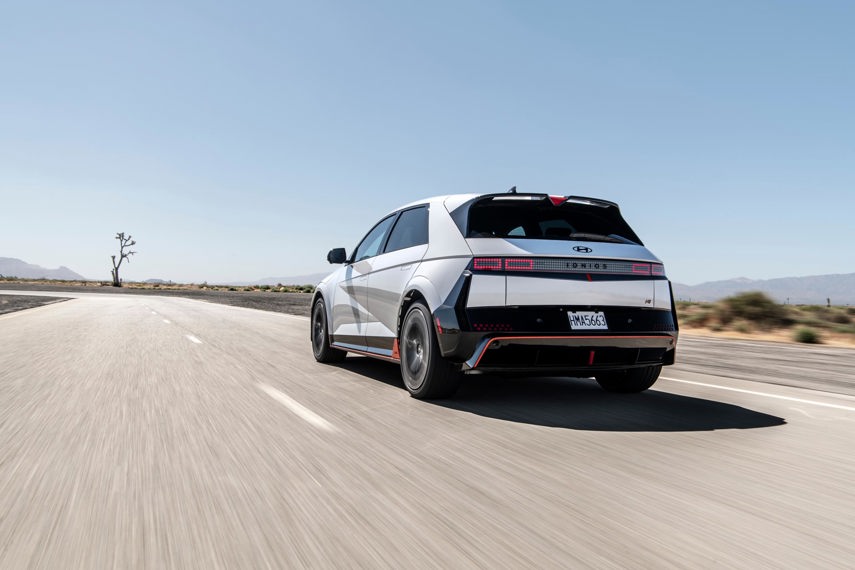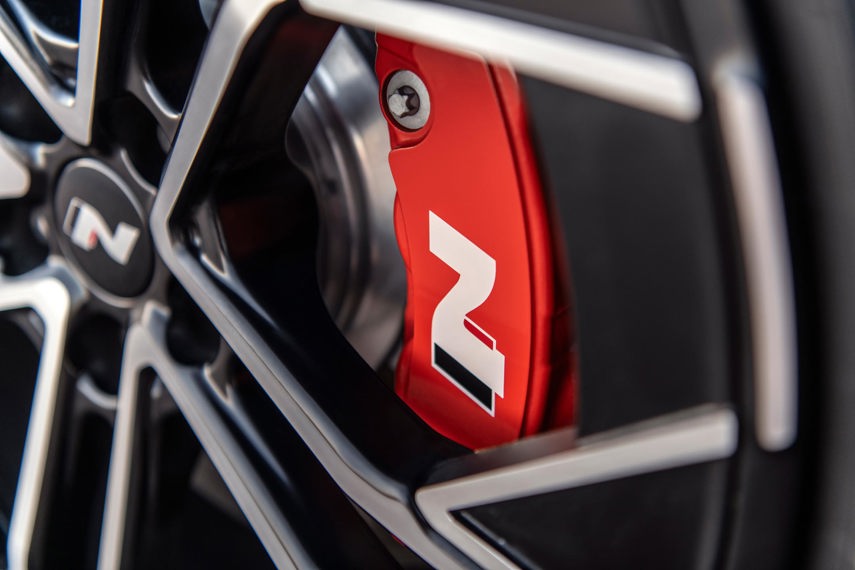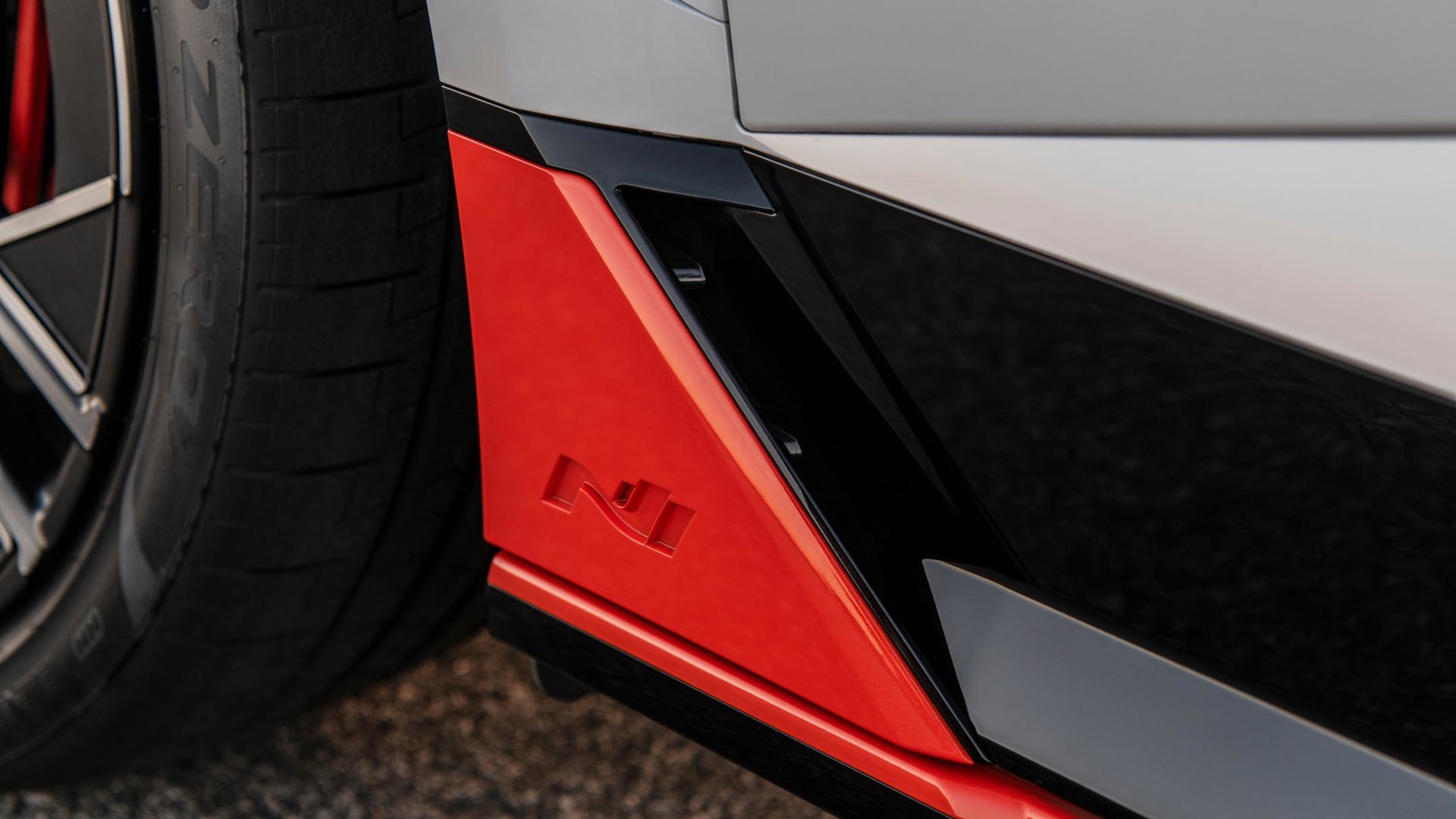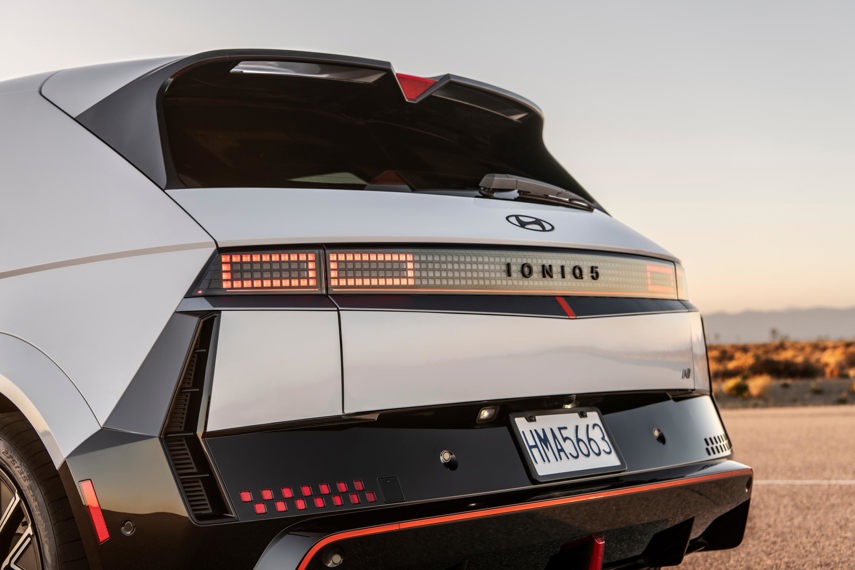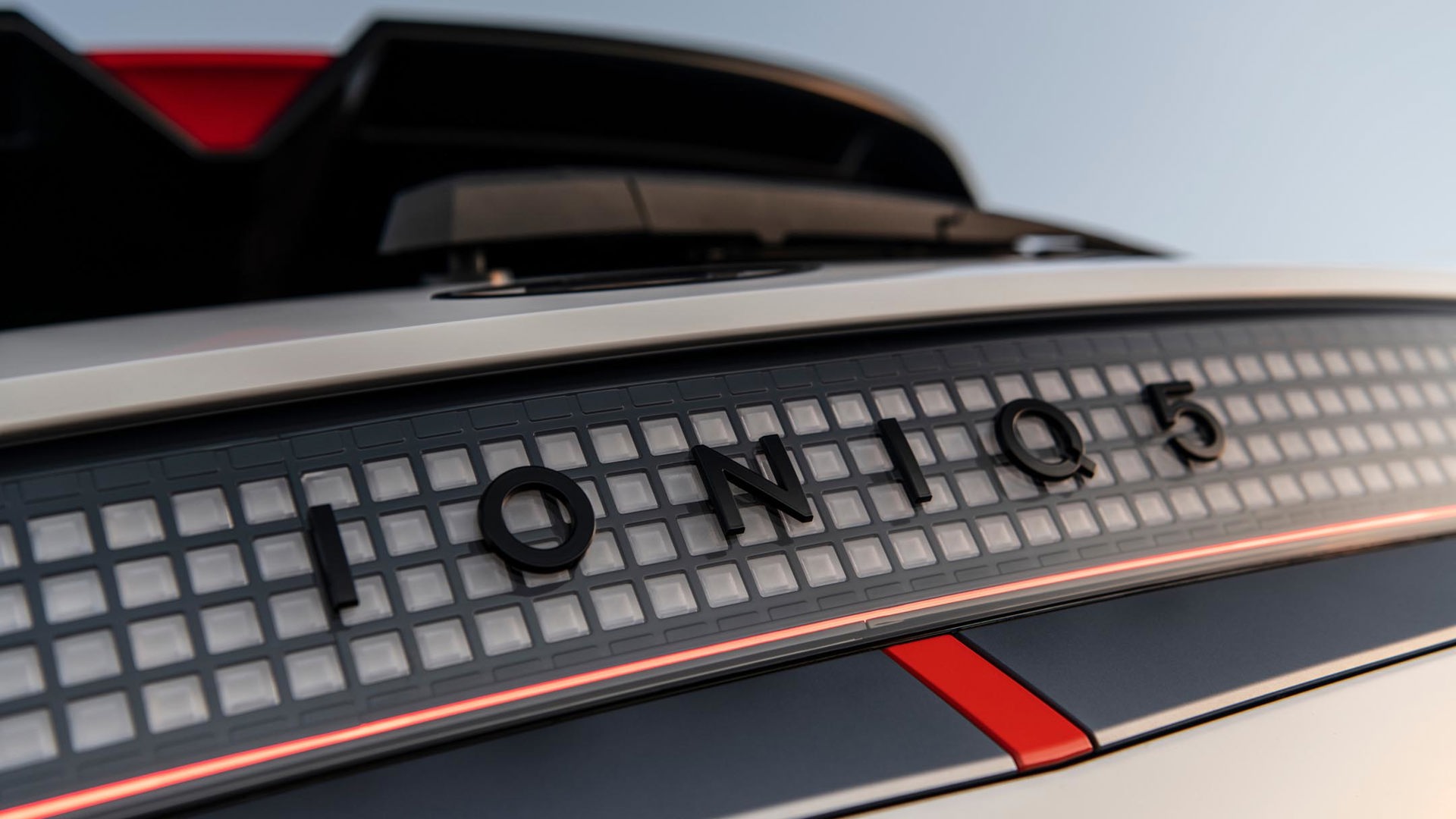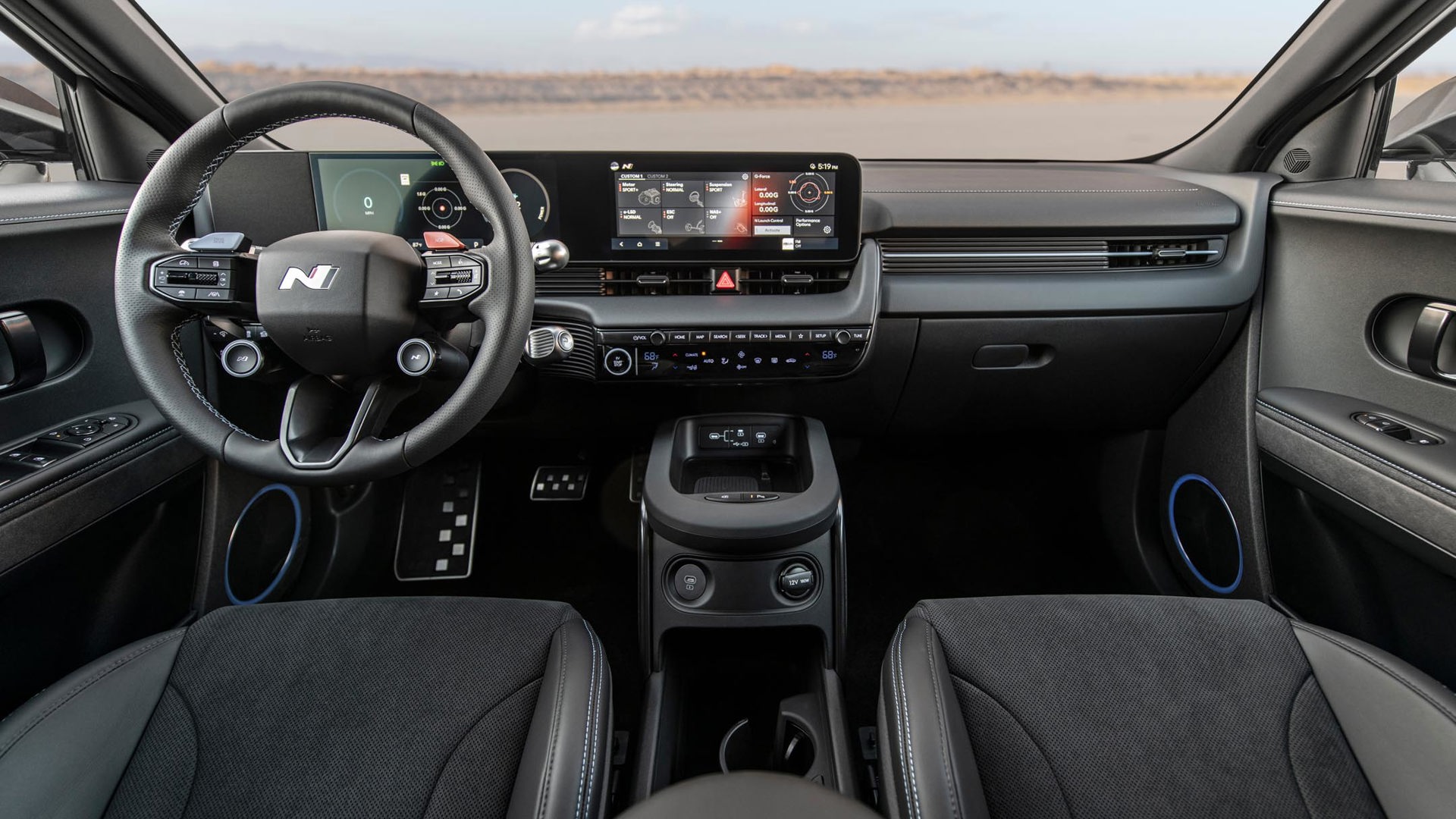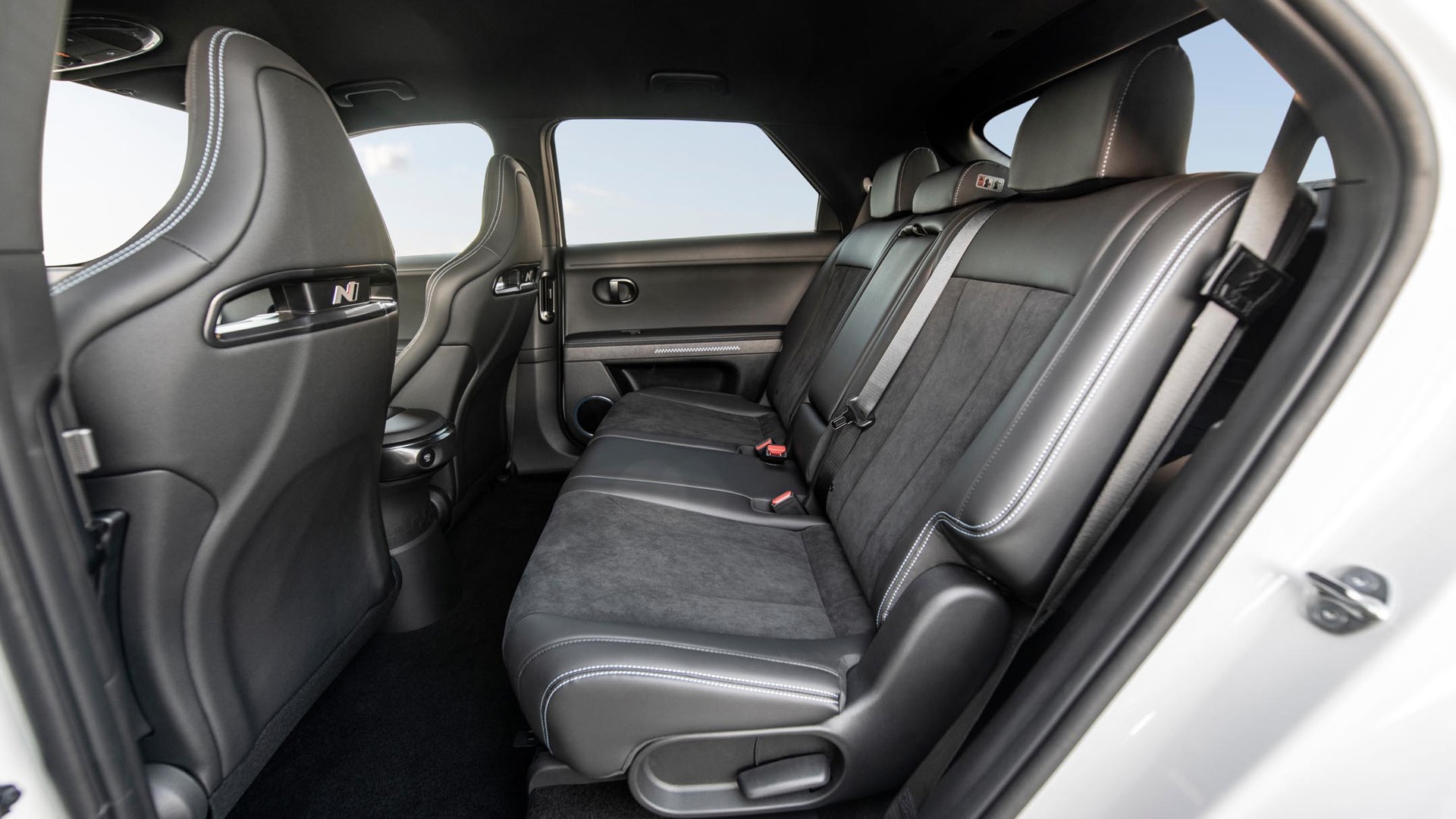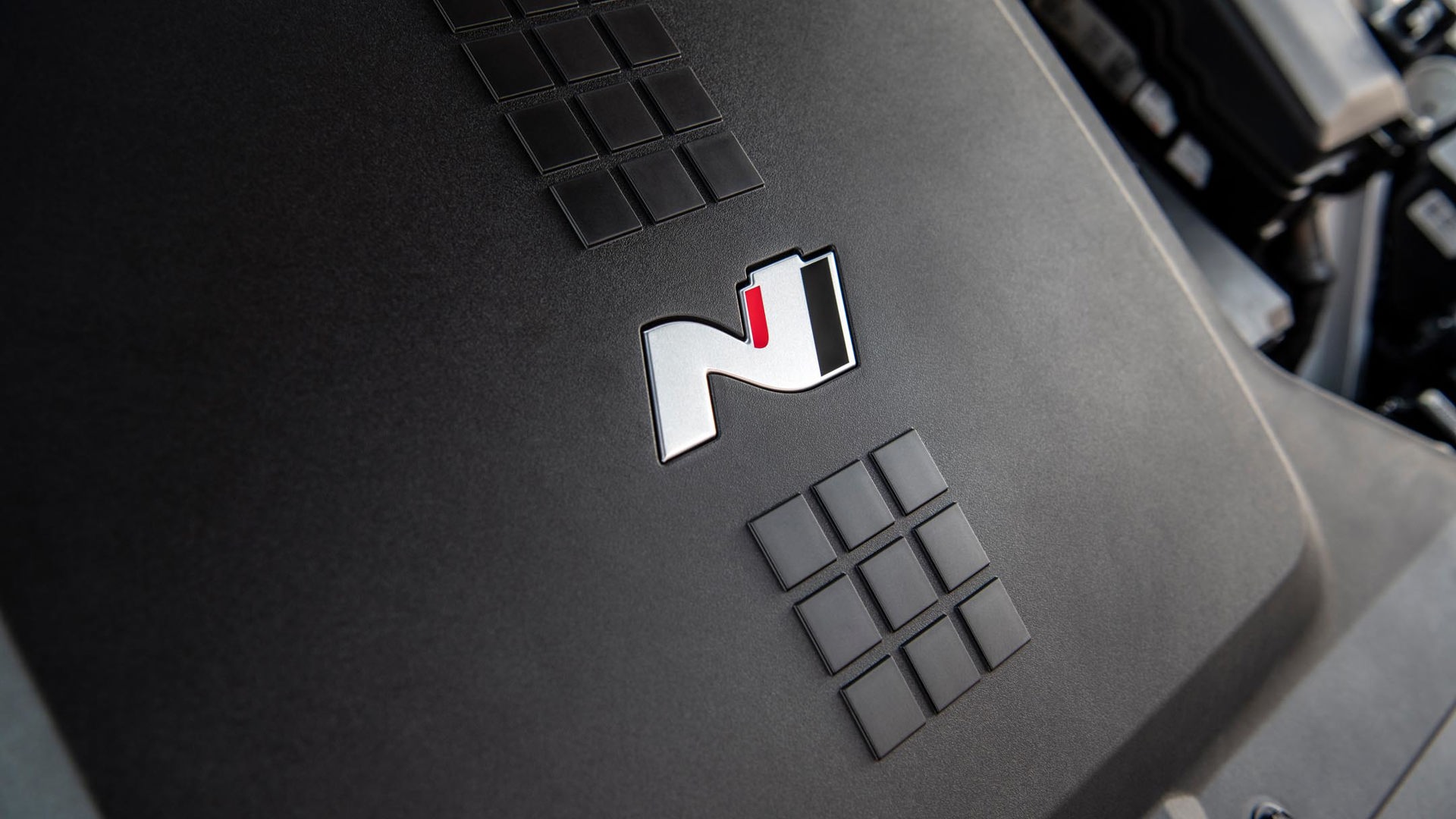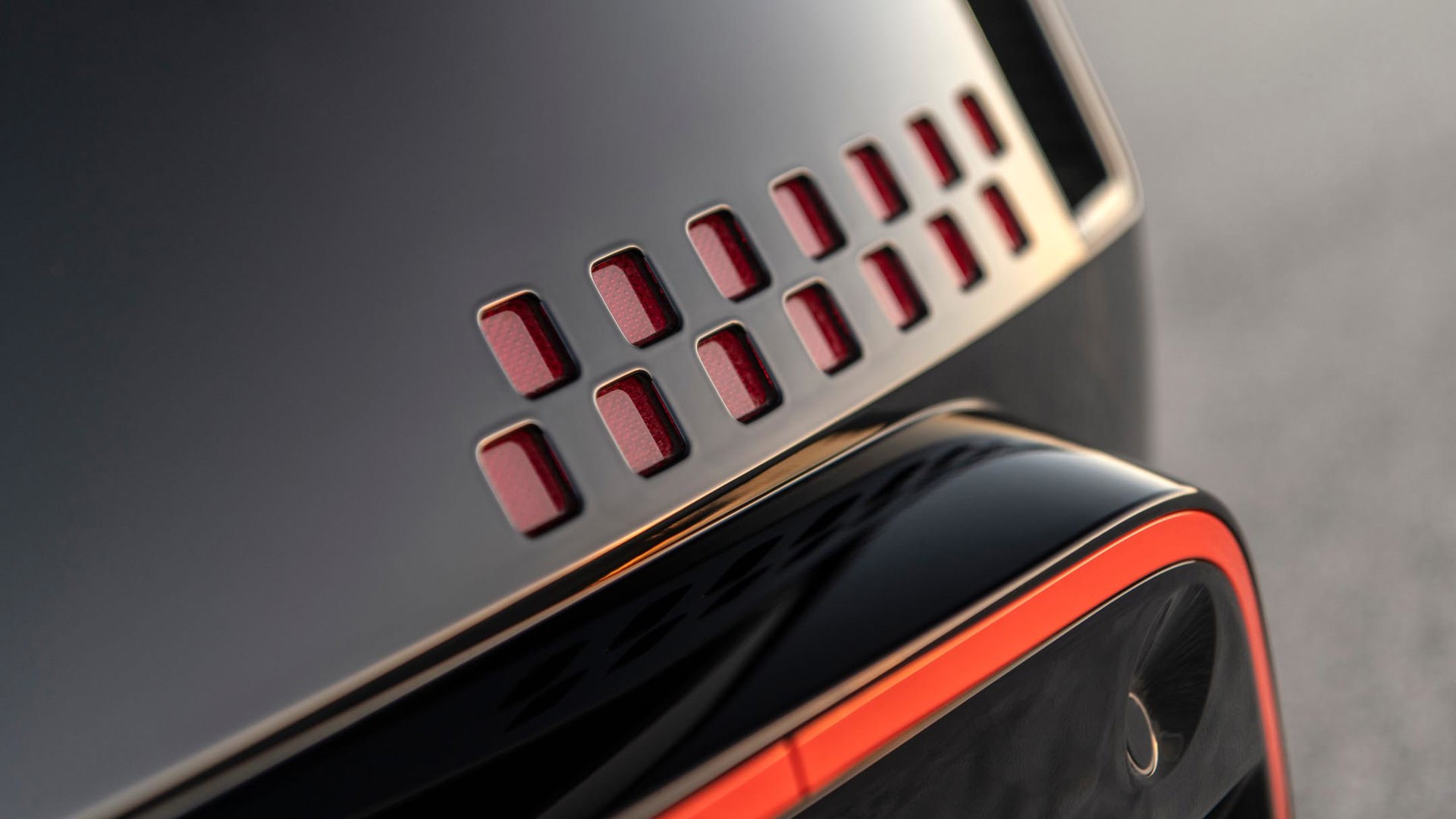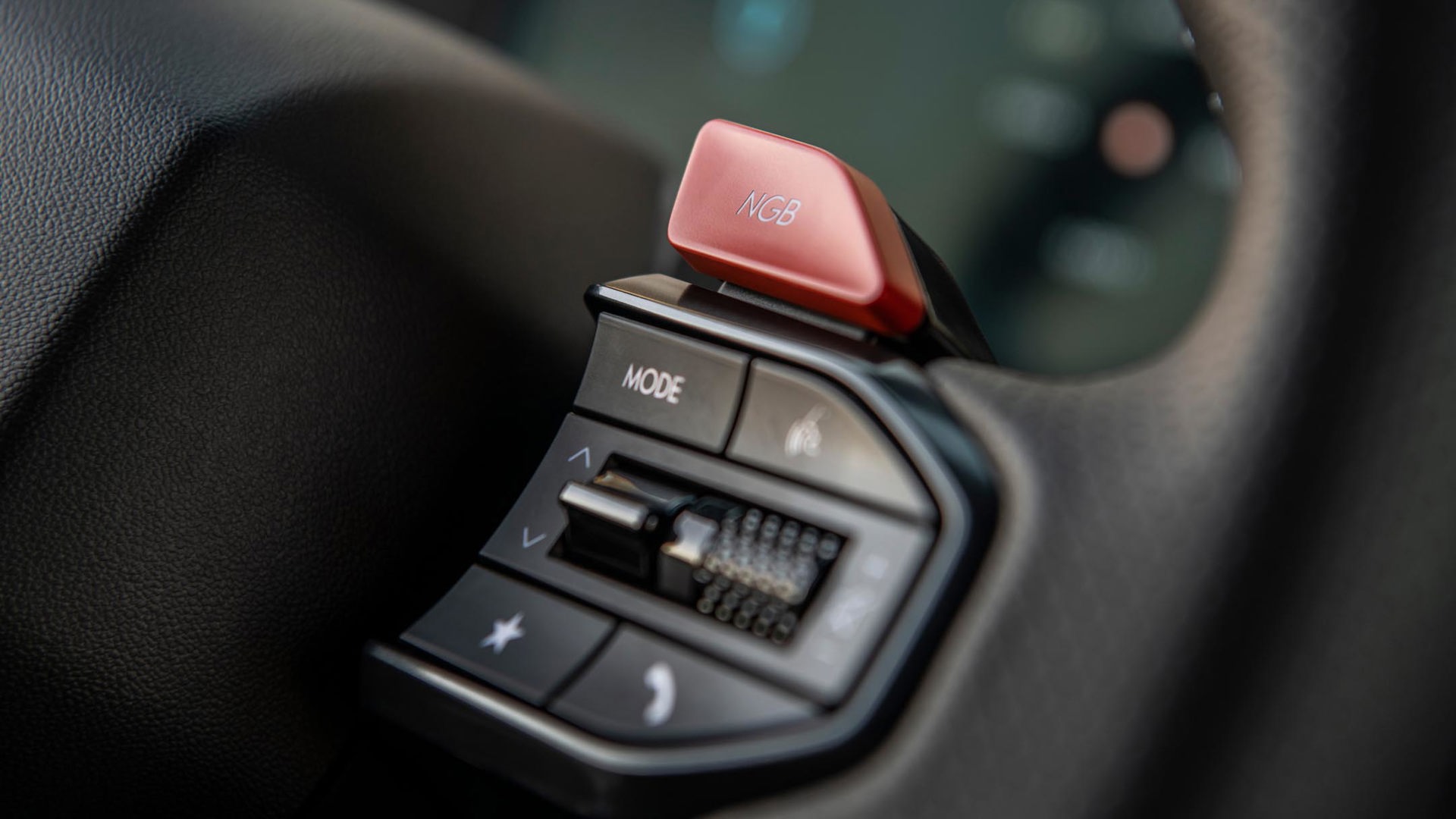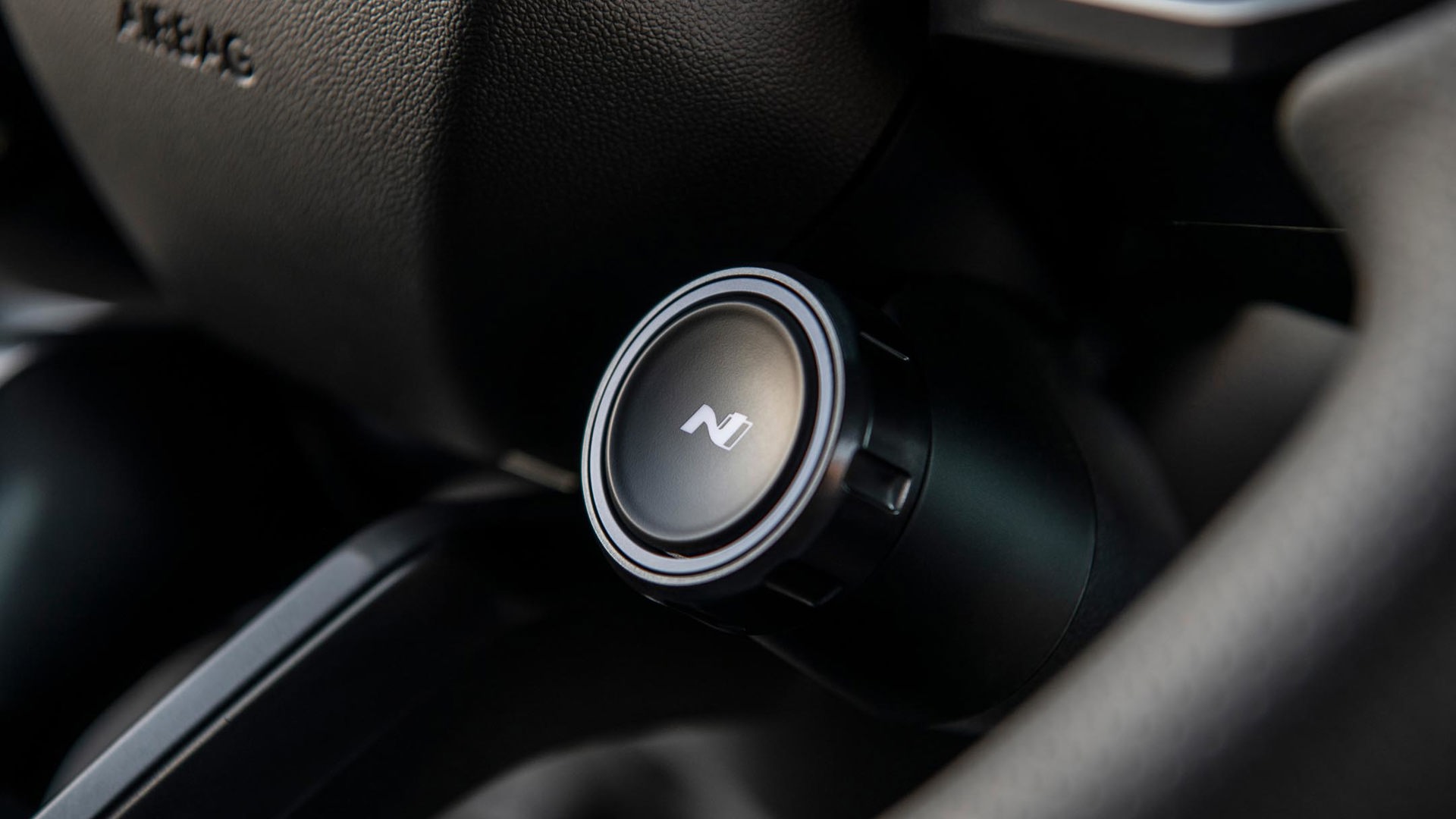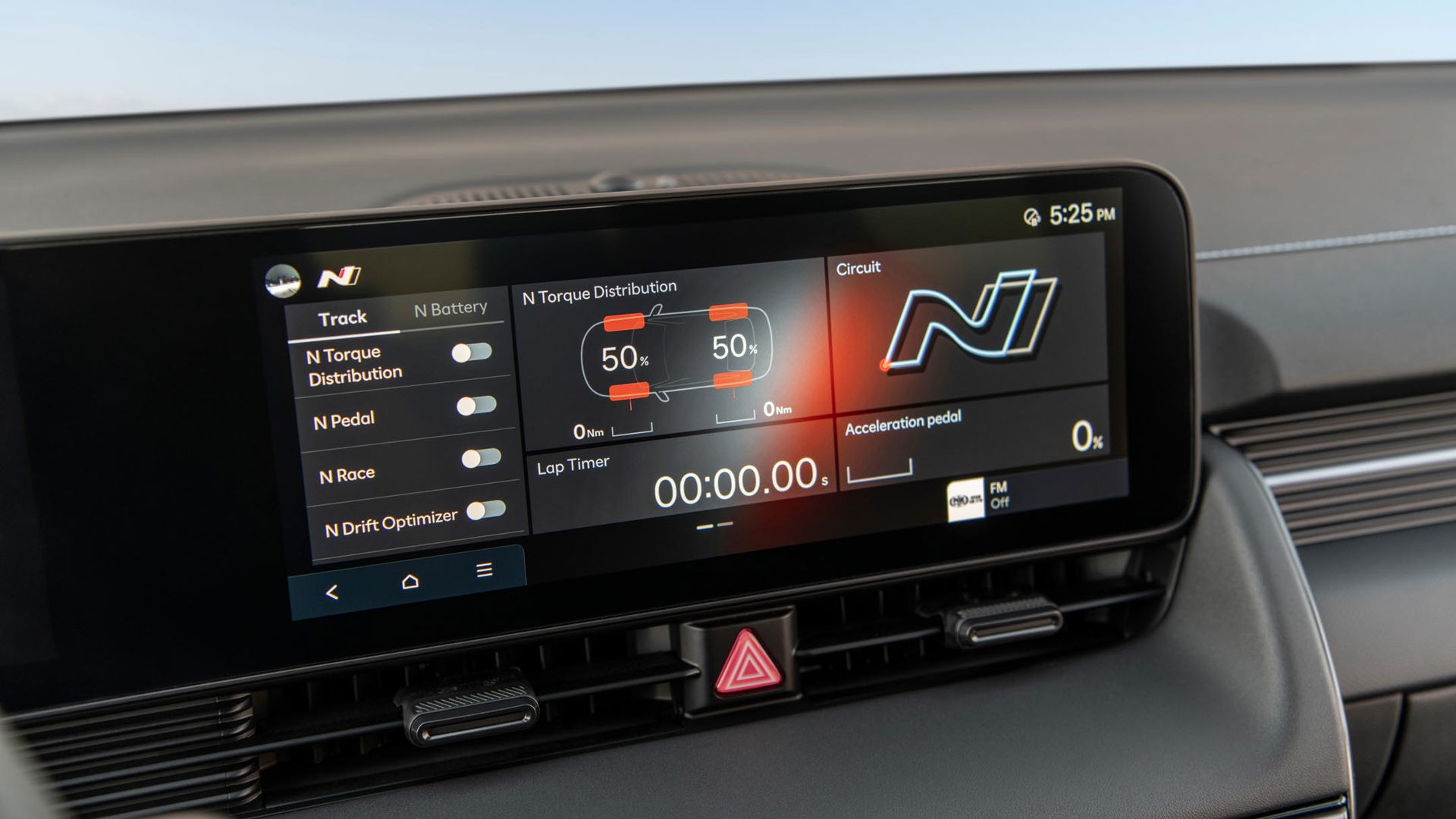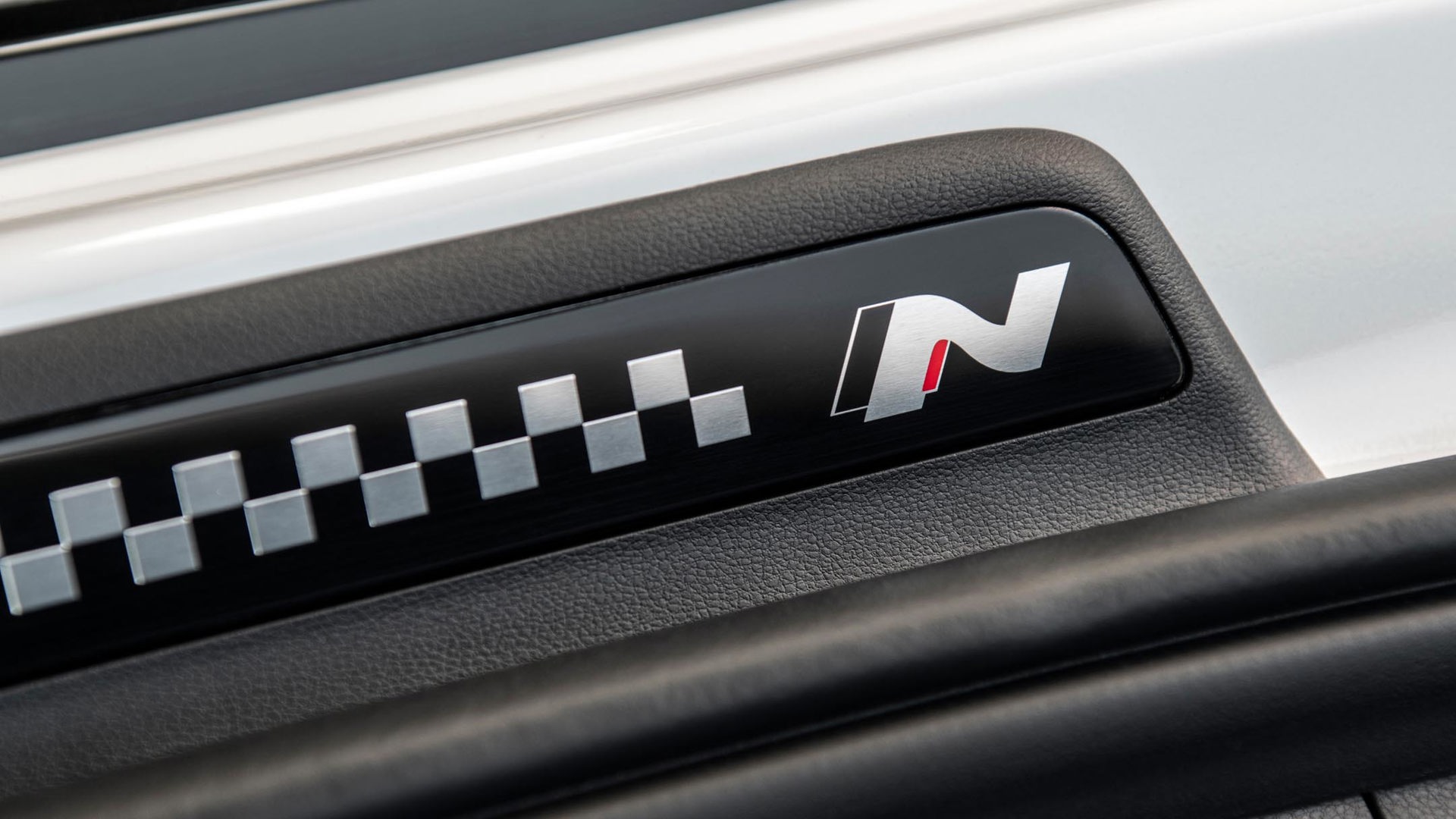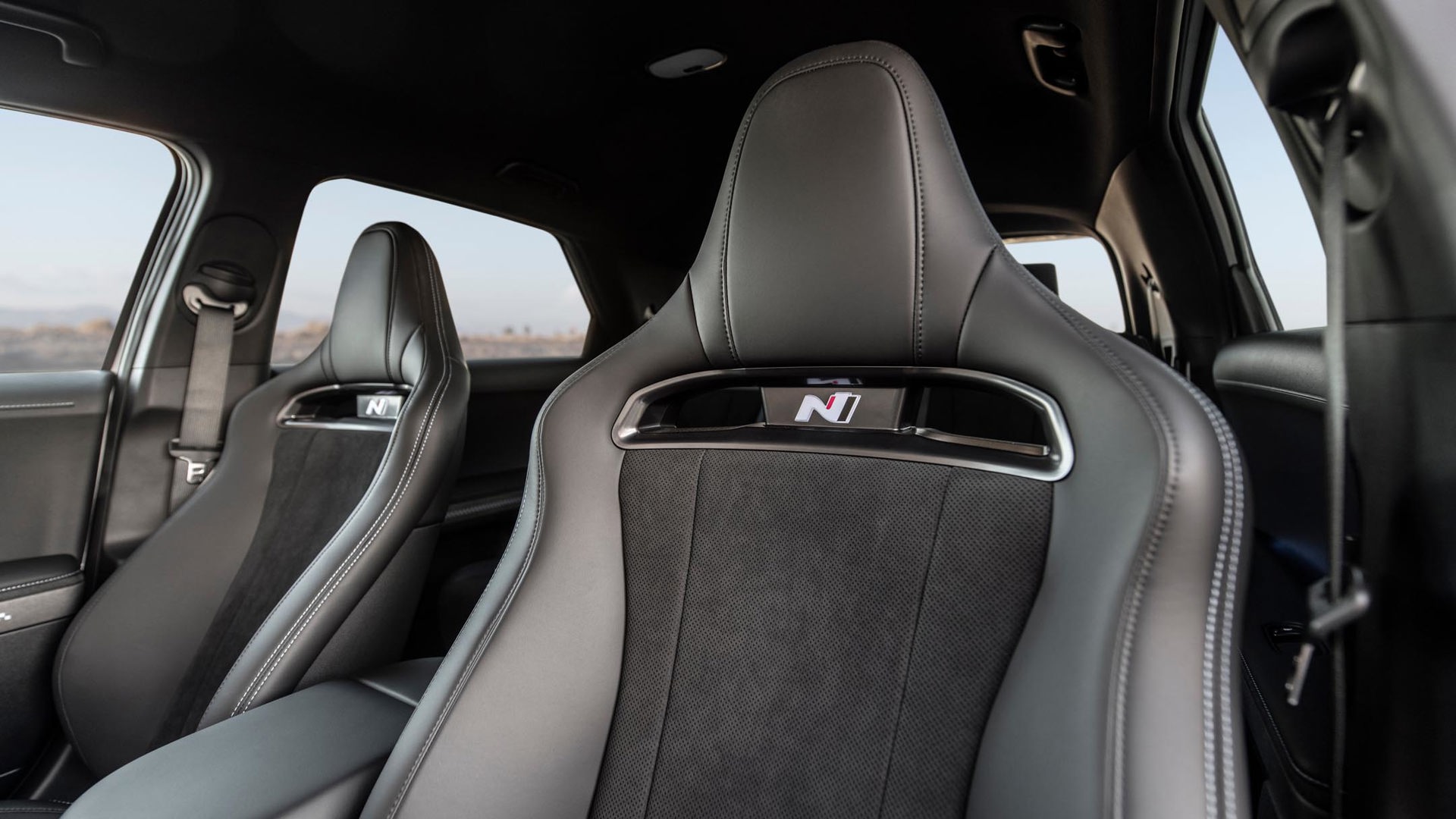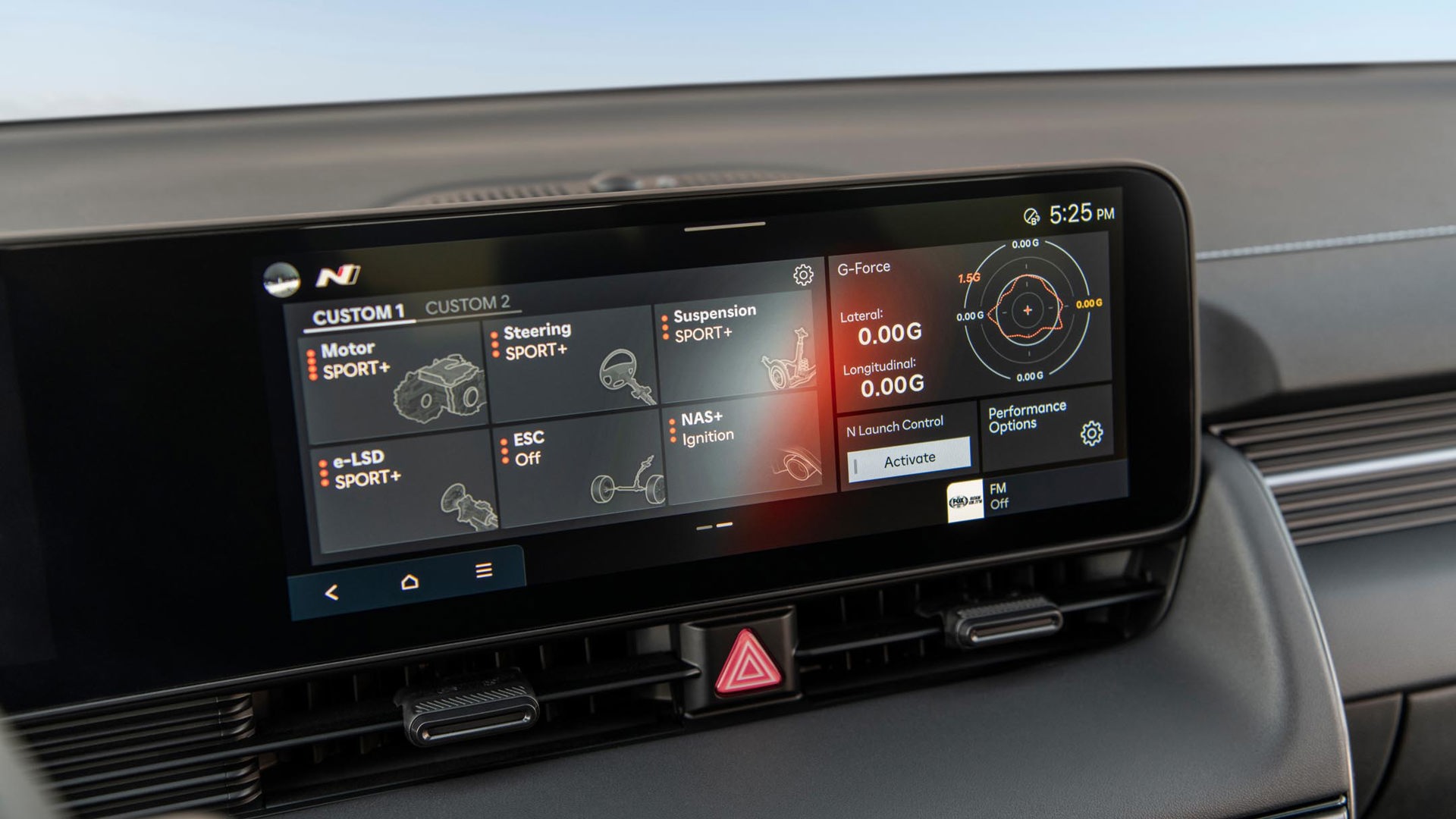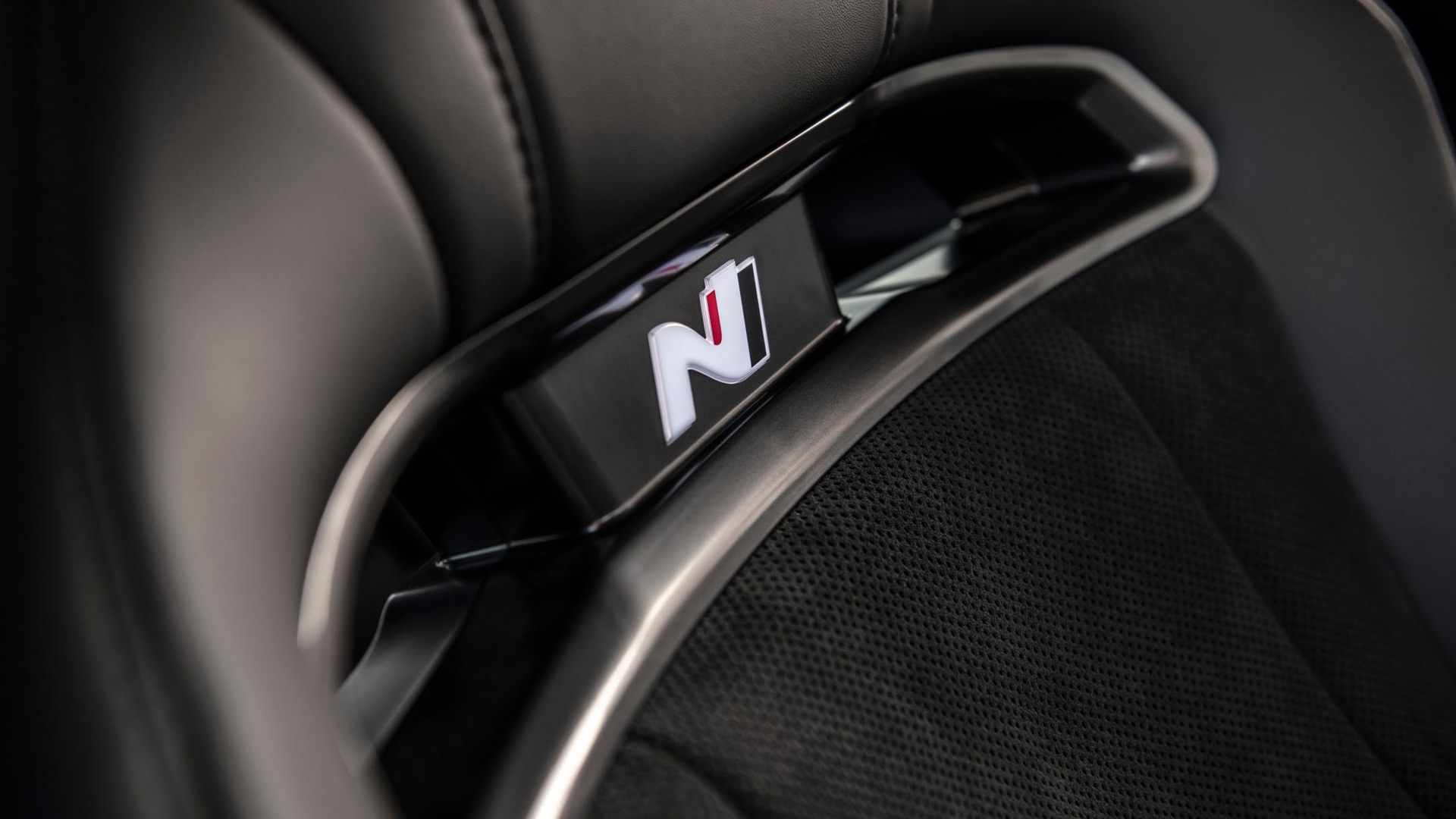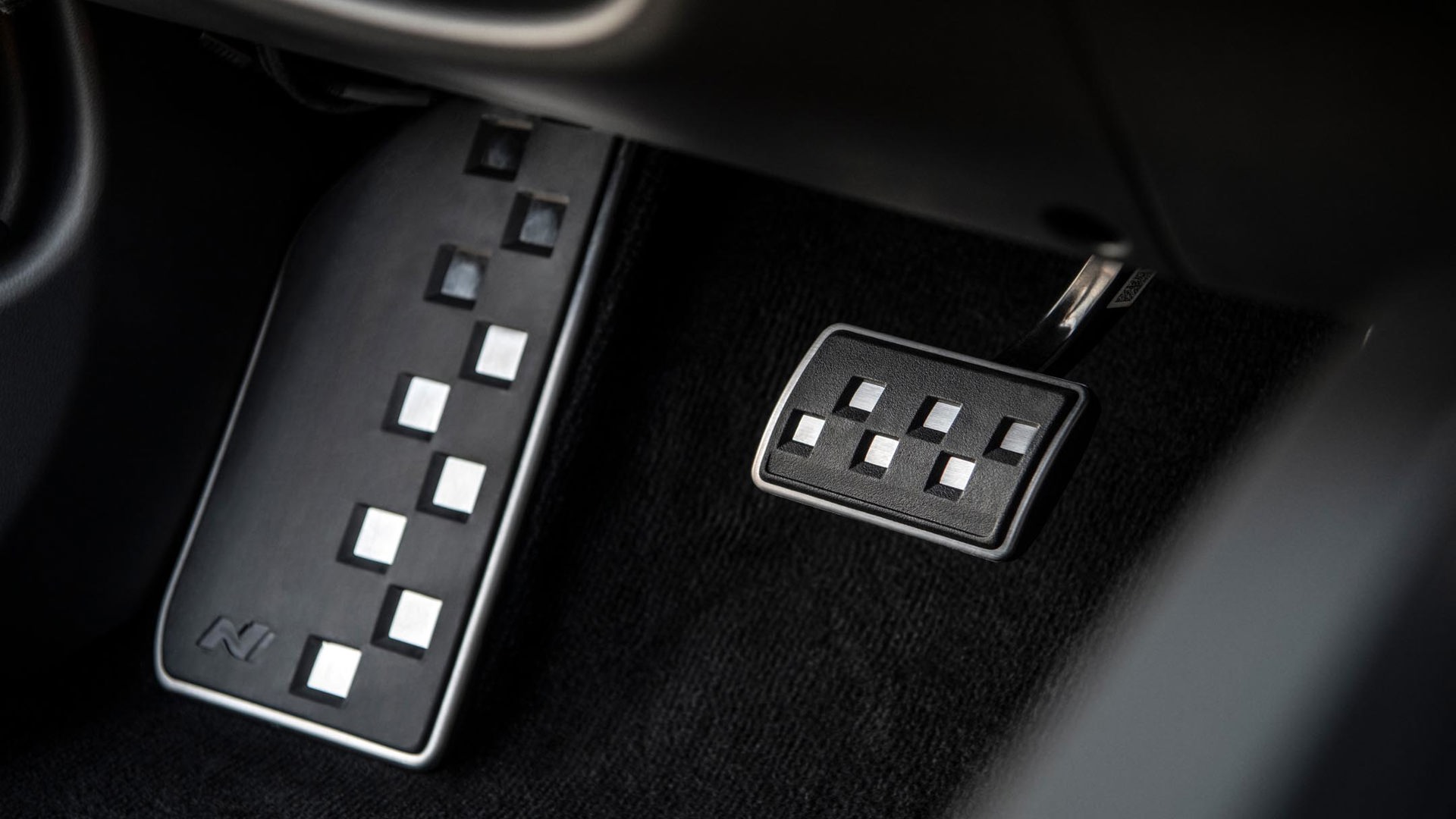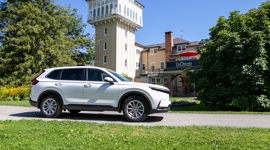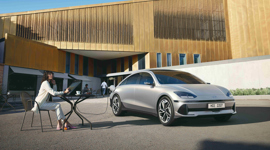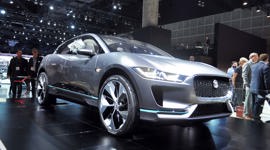The Nurburgring Nordschleife spans a gruelling 21 km.
It’s made up of more than 170 corners, not to mention 300 metres of elevation change and all the conditions the German countryside can throw at it. A single lap can seemingly span all four seasons, explaining in part why legendary racer Sir Jackie Stewart dubbed the circuit “The Green Hell” some six decades ago.
The Nurburgring is also among the driving forces behind Hyundai’s N performance division, which was launched in a bid to strengthen the brand’s bona fides. That extends to its electrification efforts, with the 2025 Hyundai Ioniq 5 N marking the first high-performance production electric vehicle (EV) to get the N treatment.
Of course, endurance and electrification don’t exactly mix, which begs the question: how far can the Ioniq 5 N go on both a literal and figurative full charge – the kind of all-out driving it was designed for? And more specifically, how does it handle the grind that is the infamous Nordschleife?
The bad news is we didn’t get a chance to find out for ourselves. But our consolation prize proved to be a scoop from a pretty good source: Hyundai N brand boss Till Wartenberg. And a quick chat at an event on the eve of this year’s Los Angeles auto show was a revealing one.
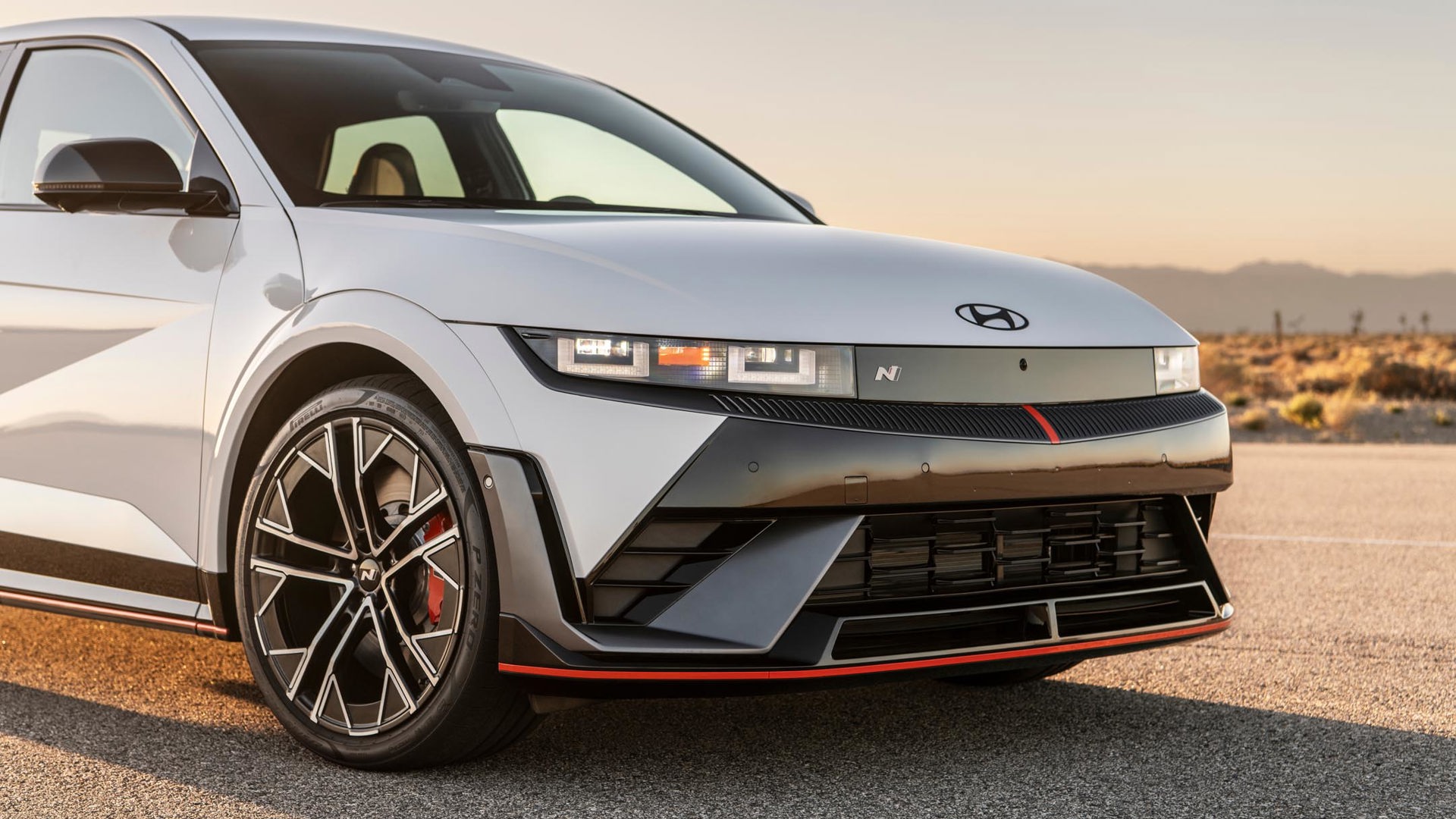
A Word on Weight
But first, some of the finer points about the 2025 Hyundai Ioniq 5 N. It’s electric, which means it’s heavy. Compare that to any of the N offerings before it – in North America, the Veloster, Kona, and Elantra have all received the same treatment – and this hefty hatchback is at a significant disadvantage.
Hyundai hasn’t revealed all the Ioniq 5 N’s specs just yet, but Wartenberg told AutoTrader this performance EV tips the scales at something in the neighbourhood of 2,200 kg (4,850 lb) – or in other words, a lot.
For reference, that’s a bit more than the conventional version of the Ioniq 5, which weighs 85 to 295 kg (187 to 650 lb) less, depending on drive configuration and equipment. Meanwhile, the Ford Mustang Mach-E GT Performance Edition, which is this N-tuned EV’s closest competitor on the mainstream market, comes in at 2,263 kg (4,989 lb).
It’s also worth noting that the slightly smaller Hyundai Kona N weighs 1,515 kg (3,340 lb). It just goes to show how fundamentally different EVs are from their gas-powered counterparts.
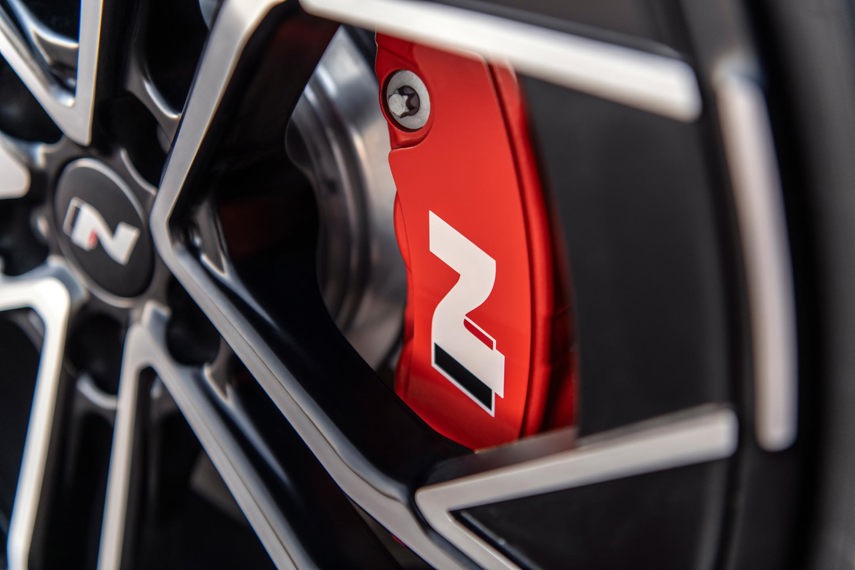
Braking It Down
Considering the extra weight it’s lugging around, the Ioniq 5 N employs all kinds of tricks to counter – and even complement – its mass. The big one is regenerative braking. Now, this technology is nothing new; it effectively turns electric motors like the pair that propels this Hyundai into generators, spinning them in reverse to capture kinetic energy that would otherwise be lost and putting it into the battery.
Anyone who’s been in an EV knows how aggressive the resulting sensation can be, slinging you forward with serious gravitational force. The Ioniq 5 N’s engineers leveraged that byproduct in a unique way, using it to help the car corner more quickly by shifting its weight forward in a way gas-powered vehicles and their mechanical brakes simply aren’t capable of. The result is up to 0.6 g of braking force, all of which is designed to help the car pivot on its front wheels.
“You can turn into corners and have this sensation of balance,” Wartenberg said. “It’s a very different type of driving.”
Better still, relying more heavily on regenerative braking counters the effects the Ioniq 5 N’s weight would otherwise have on the mechanical system. Fade is an inevitability of friction braking, but it becomes a bigger problem for performance vehicles – particularly on the track. Of course, the heavier a vehicle is, the more prone to fade its brakes would be. But that’s what makes this new system so special.
“This car is a different beast,” Wertenberg said.
But About Those Laps
With Nurburgring lap times becoming the benchmark by which almost all performance vehicles are measured, not to mention the track’s significance to the N brand itself, it was inevitable that the Ioniq 5 N would be put through its paces at some point. But how many times around the ‘Ring did it go?
“After two laps, we had 30 per cent (charge),” Wartenberg said. “That’s full-out.”
OK, two-and-a-bit laps might not seem like much, at least not at first blush, but then consider that most conventional cars can only muster a handful more before refuelling. For example, a fully race-prepped Hyundai Elantra N TCR can reportedly complete eight laps of the slightly longer 24 Hours circuit, which combines the Nordschleife and grand prix courses to span nearly 26 km, before needing to gas up again.
Wartenberg said both laps came in below the eight-minute mark, although that’s as specific as he was willing to get. That makes it a little faster than the production Hyundai i30 N Performance that isn’t sold in North America – but is related to the likes of the N-tuned Kona and Elantra models – and in the neighbourhood of the latest Volkswagen Golf R that can apparently circle the track in seven minutes and 51 seconds.
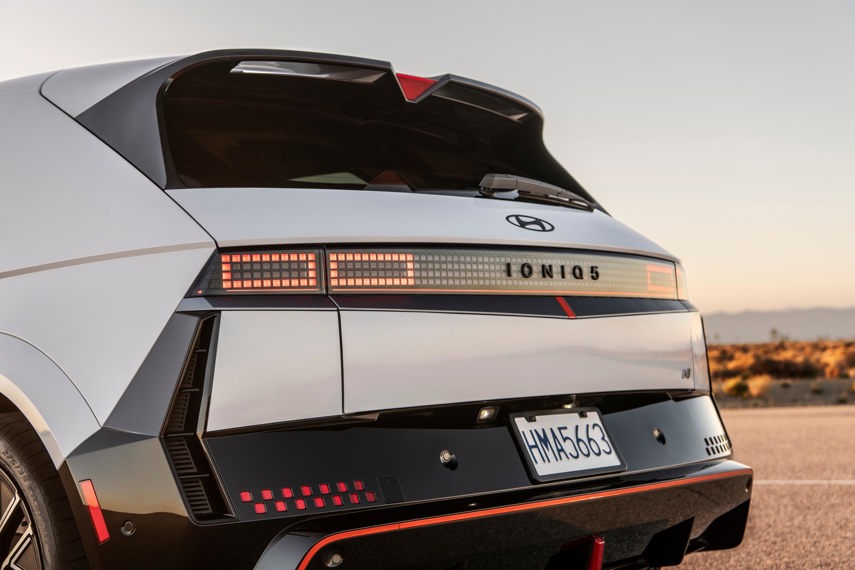
What’s Next?
With the realities of electric performance coming into focus, and all kinds of untapped potential to work with, the 2025 Hyundai Ioniq 5 N is just the beginning of what’s to come from this brand and beyond. The first step is bringing this model to market, which should happen next spring. After that – well, your guess is as good as any.
We’ll leave you with this, though. When asked about racing the Ioniq 5 N in sanctioned events, including in a single-make series, Wertenberg didn’t reveal much. He did, however, utter two important words through a wry smile that have us hopeful for the future: “Stay tuned.”
